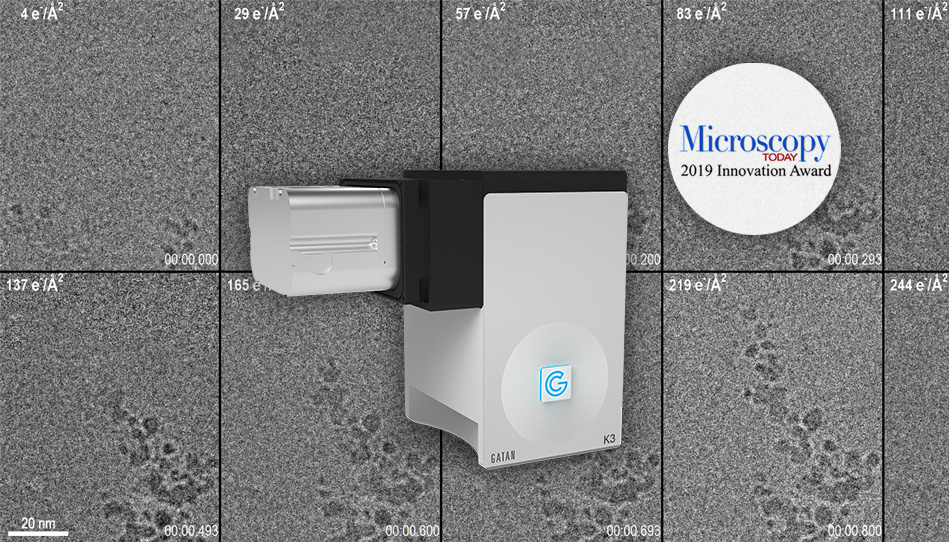14 or 24 megapixels (up to 5,760 x 4,092)


World’s first counting, high-speed, large format camera for in-situ microscopy
The Gatan K3 IS in-situ TEM camera extends the K3’s “resolution revolution” to the field of materials science. With the highest in-situ signal-to-noise possible, you can now count single electrons in real time with unprecedented temporal resolution.
K3 IS gives you low-dose imaging capabilities, for access to undiscovered details during in-situ environmental reactions and beam-sensitive material research.
14 or 24 megapixels (up to 5,760 x 4,092)
For beam-sensitive materials – more info…
For in-situ experiments
Discover new details in your in-situ TEM experiments with up to 1200 fps, a large field of view and unprecedented sensitivity. The K3 IS provides the same electron counting performance of the K3 camera, with the added ability to capture counted data continuously. Take advantage of all the same counting benefits during in-situ experiments:
Capture fast in-situ events and reactions at high resolution with the new Gatan K3 IS electron counting, direct detection TEM camera.
How to use low dose TEM to study beam-sensitive materials with reduced damage, using new electron counting camera technology.
How cryo-EM is used in structural biology to solve structures at resolutions not possible just a few years ago.
Cryo-EM has been used to generate the first 3D atomic-scale map of the coronavirus (2019-nCoV). This is a key step towards developing a vaccine and treatments for the infection.
4D STEM is an electron microscopy technique that captures a full 2D diffraction pattern at each pixel position on a STEM map. Access a wealth of diffraction data with your TEM.
An overview of single-particle cryo-electron microscopy. How it works, what it's used for, advantages of the technique and how to get the highest resolution.